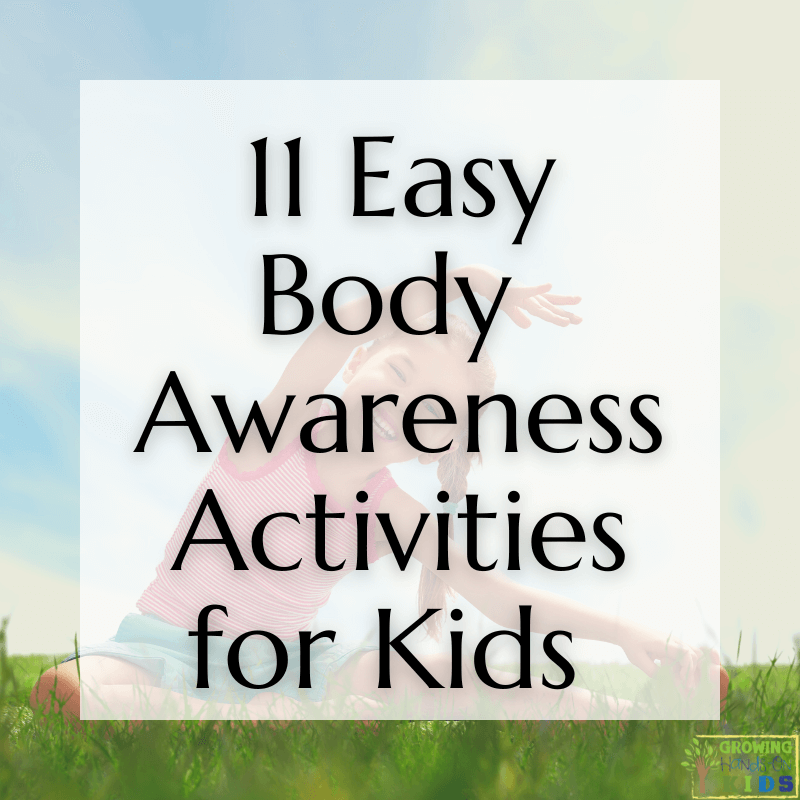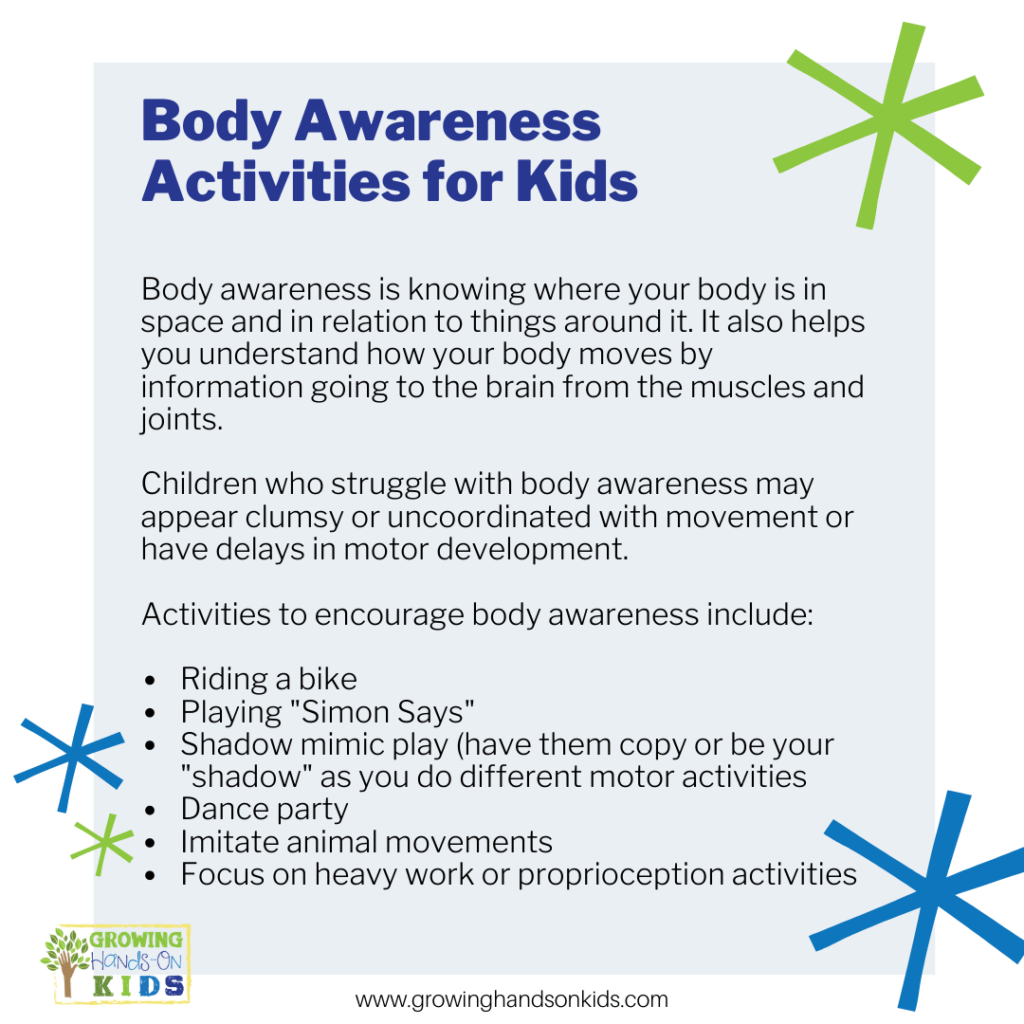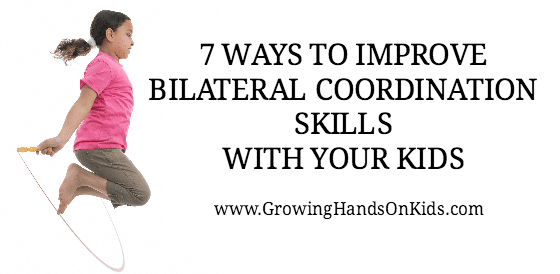11 Easy Body Awareness Activities For Kids
Affiliate and Referral links are used below to promote products I love and recommend. I receive a commission on any purchases made through these links. Please see my disclosure policy for more details. As an Amazon Associate, I earn from qualifying purchases.
Learn about the importance of body awareness and get 11 fun and easy activity ideas that educators or parents can use to promote good body awareness skills.
Does your child run into doors, not pay attention to where they are in space, or always fall? Maybe they seem like they are generally “clumsy.” They may benefit from some of these body-awareness activities.
Body Awareness Table of contents
What is body awareness?
Body Awareness is important not only to build overall strength and core muscle but to realize where the body is in space (i.e. where the body is in relation to other objects).
You may also see body awareness referred to as kinesthesia, which is knowing how your body parts are moving and positioned in relation to the muscles and joints.
Body awareness involves two of the eight sensory systems, the vestibular and proprioception system.
The vestibular system is responsible for balance and is located in the inner ear.
Proprioception is sensory input coming from the muscles and joints of the body.
You can read more about all eight sensory systems in this post.
Signs of poor body awareness
Children may show signs of poor body awareness for a number of reasons. This could include sensory processing challenges (sensory processing disorder), Autism Spectrum Disorder, motor delays, and more.
Some signs of poor body awareness skills include:
- Poor posture, especially while sitting
- Poor spatial awareness (knowing left from right, top vs bottom, knowing how far away an object is from your body, etc.)
- Awkward or clumsy movements (compared to same-aged peers)
- Bumps into other people or objects in the environment
- Holds a pencil with too much or not enough pressure
- Needs to look at their feet or body part that is moving in order to complete the task (ex: walking, balancing, buttoning a shirt, or pulling up a zipper)
- Avoids learning new skills or activities, particularly ones that involve gross motor or fine motor movement
- Avoids physical activity in general
- Difficulty in catching or throwing a ball
- Difficulty with sequential fine motor activities like buttoning, zipping, and tieing shoes
- Avoids closing their eyes or being in the dark
- Difficulty with mimicking movements
How do you teach kids body awareness?
I'm going to give you some detailed activity ideas in the next section of this post. For children who are struggling with poor body awareness, there are some easy things you can add to their day to help support them.
Making these activities into a fun game is one of the best ways to engage children in learning more about their bodies and how they move.
Encouraging movement throughout the day, especially in the classroom is so important. It does require us as educators, therapists, and parents to think outside the box and figure out how academics can be taught in a more active way.
Here are some easy ways to encourage movement throughout the day to promote body awareness:
- Have activities set up on the floor, standing desk, or on a wall to encourage children to place their bodies in different positions (kneeling, standing, laying down)
- Have movement breaks throughout the day (you can read more about brain breaks here)
- Provide different seating options in the classroom
- Play games to encourage children to move their bodies in different ways (see more ideas for this below)
For children who are really struggling with gross motor and fine motor skills, it's important to address any body awareness challenges. This could mean an evaluation by a Physical Therapist or Occupational Therapist would be beneficial.
Occupational Therapy can help children in a variety of ways to address proprioception, vestibular, and visual-motor skills needed for body awareness.
11 body awareness activities for children
1 || Play with a large ball
Encourage your child to kick the ball, using one foot and then the other. Then throw the ball and catch it too.
2|| Ride a bike
Encourage your child to ride a bike, a push bike, or a pedal bike with or without side-wheels, according to your child's ability. Balance bikes are a great option for younger children who have not learned to peddle yet.
3 || Play “Simon Says”
Say an action that your child must copy. If your child needs a visual cue, complete the movement yourself as you describe it. You can include parts of the body, gross motor movements, silly noises, etc.
4 || Teach your child about spatial relations
To teach your child spatial relations, ask them to stand in front of a chair, behind a chair, next to the chair, on top of the chair, and crouch under the chair.
This motor skills prepositions game is perfect for toddler or preschool-age children.
5 || Improve lateral movement
To develop their sense of laterality, have them kneel on the floor, then instruct them to turn to lift their left hand, their right leg, etc. Yoga moves can also be a great way to work on this.
6 || Shadow mimic play
Have your child be your shadow and mimic all your actions as you walk about and perform simple actions (i.e. marching in place, cross crawls, bringing elbows to the knee, raising arms above the head, etc).
7 || Dance or move to action songs
Learn action songs and perform the actions as you sing them. (You can also use dance competition videos or games if you are not able to be outside). You can find some great ideas here in my 10 movement songs for kids post.
8 || Imitate animal movements
Ask your child to imitate the movement of different animals: creep like a snake, waddle like a duck, hop like a rabbit, etc. The creativity on this one is endless.
Check out these farm animal movement cards here.
9 || Work on balance
Encourage your child to balance on one leg, and then the other for as long as possible. Use balance beams or “walk the line” with a piece of painter's tape on the floor. Nature playscapes are also great for this, they usually have large logs for balancing on.
10 || Focus on proprioception
Provide lots of proprioceptive input through heavy work ideas. This provides input on how the muscles, joints, head, and trunk move and work.
11 || Set up an obstacle course
Obstacle courses are a great way to encourage children to move their bodies in different ways, moving around objects, under, over, or behind them, etc.
You can also use these sensory-motor stations to encourage motor planning and body awareness. There is one sensory-motor station for the home and another sensory-motor station for the classroom.
Free body awareness handouts
I've created a two-page handout with the information in this post that you can download for free when you sign up for my email list.
The first page includes poor body awareness signs and the second page includes the 11 activity suggestions with their descriptions.
To get your free download, put your email address into the box below and then click on the green “click here” button. You'll be redirected to a success page with an additional special offer.
Head to your email inbox and look for an email from me with a link to download your free printable and confirm your subscription in that email.
If you are a returning subscriber, entering your email address below does not double-subscribe you to my list. It just lets my email provider know which download to send you.
By entering your email address into the form below, you are agreeing to my site's terms of use and privacy policy located here.
You May Also Like:

Heather Greutman, COTA
Heather Greutman is a Certified Occupational Therapy Assistant with experience in school-based OT services for preschool through high school. She uses her background to share child development tips, tools, and strategies for parents, educators, and therapists. She is the author of many ebooks including The Basics of Fine Motor Skills, and Basics of Pre-Writing Skills, and co-author of Sensory Processing Explained: A Handbook for Parents and Educators.




I THINK THIS IS VERY INFORMATIVE …CHILDREN WILL ENJOY IT…WE CAN ADD SOME SIMPLE YOGAS ALSO.